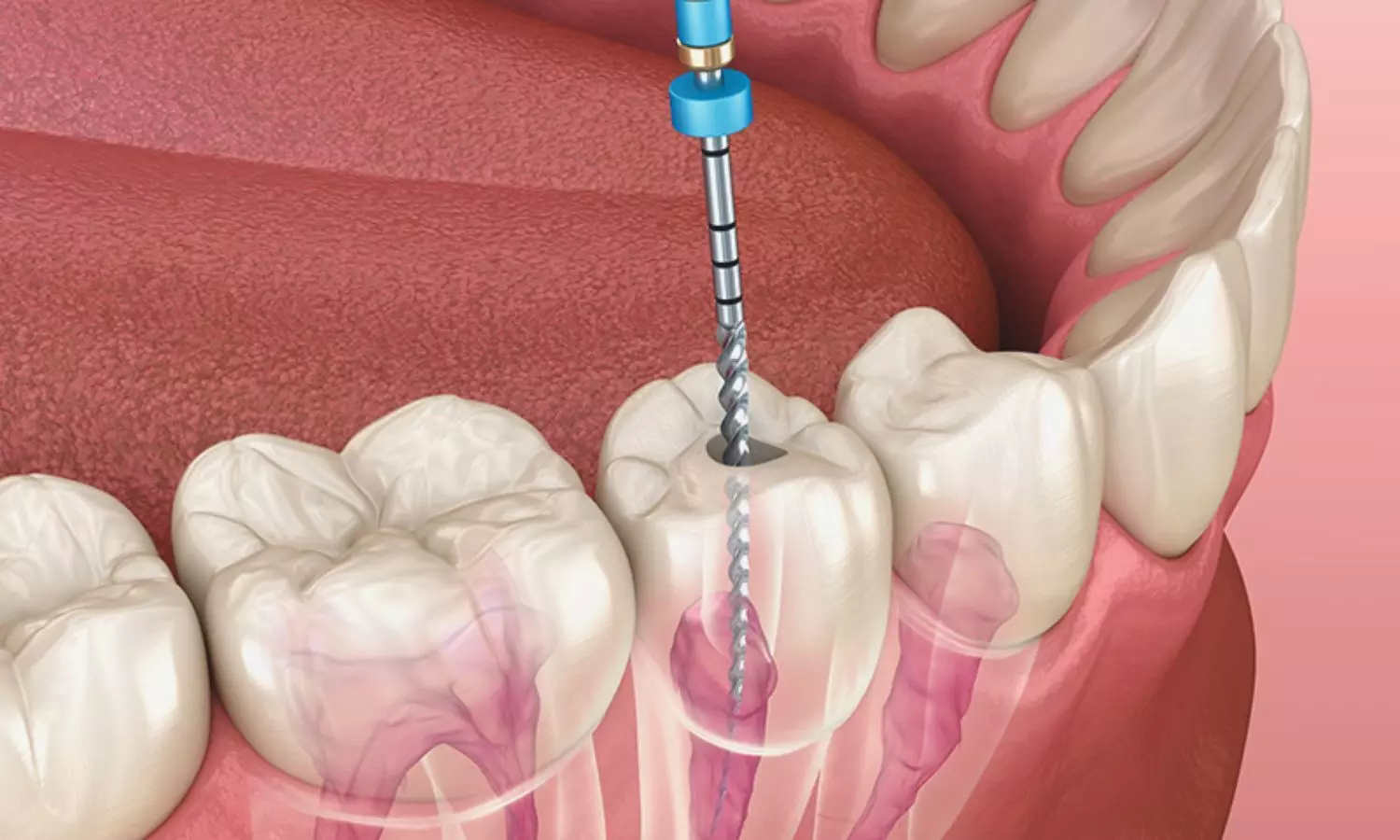Nanoparticles Could Revolutionize Endodontics — Promise and Practical Hurdles: Study
- byDoctor News Daily Team
- 14 September, 2025
- 0 Comments
- 0 Mins

Belgium: Researchers have found in a new study that nanoparticles offer significant potential inendodonticsby enhancingantibacterialand biocompatible properties compared to conventional materials. However, concerns about long-term biocompatibility, manufacturing scalability, and clinical integration remain; the review calls for focused translational research to safely and practically integrate these laboratory advances into everydaydental practice. The scoping review, published inDiscover Nanoby Una Ivković and colleagues from the OMFS-IMPATH Research Group, Department of Imaging and Pathology, Faculty of Medicine, University of Leuven, Belgium, highlights the expanding role of multifunctional nanoparticles in endodontics. These nanoscale materials are being investigated for their potential to regenerate the dentin–pulp complex, enhance the mechanical and biological performance of dental materials, and act as carriers for targeted therapeutic delivery. Following PRISMA-Scoping Review guidelines, the team conducted an extensive literature search across Web of Science, PubMed, and Scopus. Of 490 initially identified articles, 70 met the inclusion criteria after full-text review. Data from both in vitro and in vivo studies were summarized, revealing that inorganic nanomaterials dominated the research landscape, featuring in 77% of studies, while organic nanomaterials accounted for 23%. The study revealed the following findings: However, translating these benefits to clinical settings poses significant challenges. Current evidence is heavily based on controlled laboratory conditions that may not fully replicate the complexity of the oral environment. The authors highlight the need for more physiologically relevant models, including 3D culture systems, microfluidic tissue-on-chips, and organ-on-chips, to bridge this gap. Future research priorities include optimizing nanoparticle formulations for specific therapeutic objectives, establishing standardized testing protocols to improve reproducibility, and expanding antibacterial evaluations to reflect the diverse microbial environment of the oral cavity. Additionally, robust clinical trials are essential to confirm real-world safety, effectiveness, and cost-efficiency. The authors conclude that incorporating nanoparticles into endodontic practice could shift the field from a reliance on bio-inert materials to bioactive, regenerative solutions. By enabling tissue preservation, promoting healing, and facilitating targeted therapies, these innovative materials hold the potential to significantly enhance long-term outcomes for patients undergoing endodontic treatment. Ivković, U., Moreno-Rabié, C., Mignon, A. et al. Multifunctional nanoparticles in endodontics: applications, challenges, and future directions. Discover Nano 20, 130 (2025). https://doi.org/10.1186/s11671-025-04314-7
Disclaimer: This website is designed for healthcare professionals and serves solely for informational purposes.
The content provided should not be interpreted as medical advice, diagnosis, treatment recommendations, prescriptions, or endorsements of specific medical practices. It is not a replacement for professional medical consultation or the expertise of a licensed healthcare provider.
Given the ever-evolving nature of medical science, we strive to keep our information accurate and up to date. However, we do not guarantee the completeness or accuracy of the content.
If you come across any inconsistencies, please reach out to us at
admin@doctornewsdaily.com.
We do not support or endorse medical opinions, treatments, or recommendations that contradict the advice of qualified healthcare professionals.
By using this website, you agree to our
Terms of Use,
Privacy Policy, and
Advertisement Policy.
For further details, please review our
Full Disclaimer.
Recent News
BFUHS notifies on round 5 nursing admissions, deta...
- 24 October, 2025
24-year-old Rajasthan MBBS student goes missing in...
- 24 October, 2025
TCT Conference 2025: Here are Top 10 Global Leader...
- 24 October, 2025
Lupin unveils authorized generic version of Ravict...
- 24 October, 2025
Daily Newsletter
Get all the top stories from Blogs to keep track.


0 Comments
Post a comment
No comments yet. Be the first to comment!